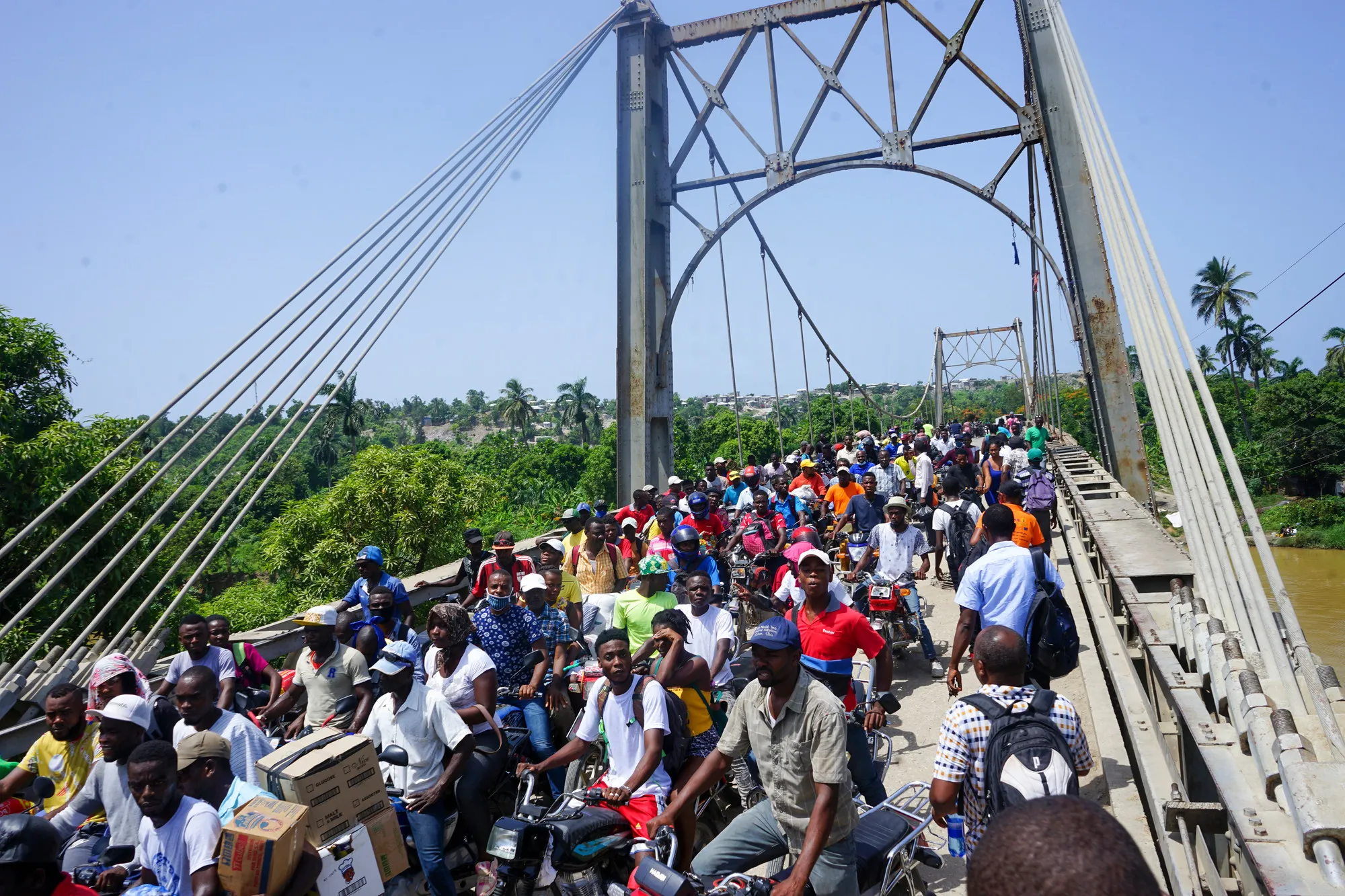Port-au-Prince, September 2, 2021 – Just over two weeks after a devastating earthquake struck the South-Western region of Haiti, massive damages to roads and bridges continue to hamper aid efforts. The humanitarian organization CARE reports that while aid is coming through, many remote communities are yet to be reached.
The earthquake that struck the regions of Grand’Anse, Nippes and Sud left 2,207 people dead and 12,268 injured. An estimated 130,000 houses have been destroyed or severely damaged. The situation was later compounded with heavy rains from tropical depression Grace.
“We are working round the clock”, says CARE Haiti’s Country Director Lora Wuennenberg. “It really is a team effort with the local communities and authorities to get aid through. But a collapsed bridge is a collapsed bridge. And in the case of Jérémie, a town in the West of Haiti, such a bridge is the only way out of the city to rural communities badly affected by the earthquake. We’re trying to find detours and work around these challenges, but it is a race against time.”
CARE is particularly concerned about the current shelter conditions for women and children. Many people have to camp out in the open and do not even have access to clean drinking water or basic hygiene yet. Women face increased risks for their safety and personal hygiene in such circumstances.
“It was difficult to live here, even before the earthquake”, says 23-year-old Lourdia from Jérémie. “We didn’t have water storages, so we had to wait for rain to get water. And hardly anyone could pay for medical care. Now, my house is completely destroyed. I live under a plastic sheet and my little girl has caught a cold. I don’t even have clean water for her nor could I pay for a doctor.”
CARE teams on the ground have been working hard since the earthquake hit to reach affected communities. So far, almost 120,000 people have received immediate assistance such as plastic sheeting, hygiene kits and safe drinking water. CARE works alongside the local authorities and other humanitarian actors.
CARE is calling for 20 million USD to fund the emergency response. To help, please donate here.
For More Information:
Rachel Kent
Senior Press Officer
Rachel.Kent@care.org

